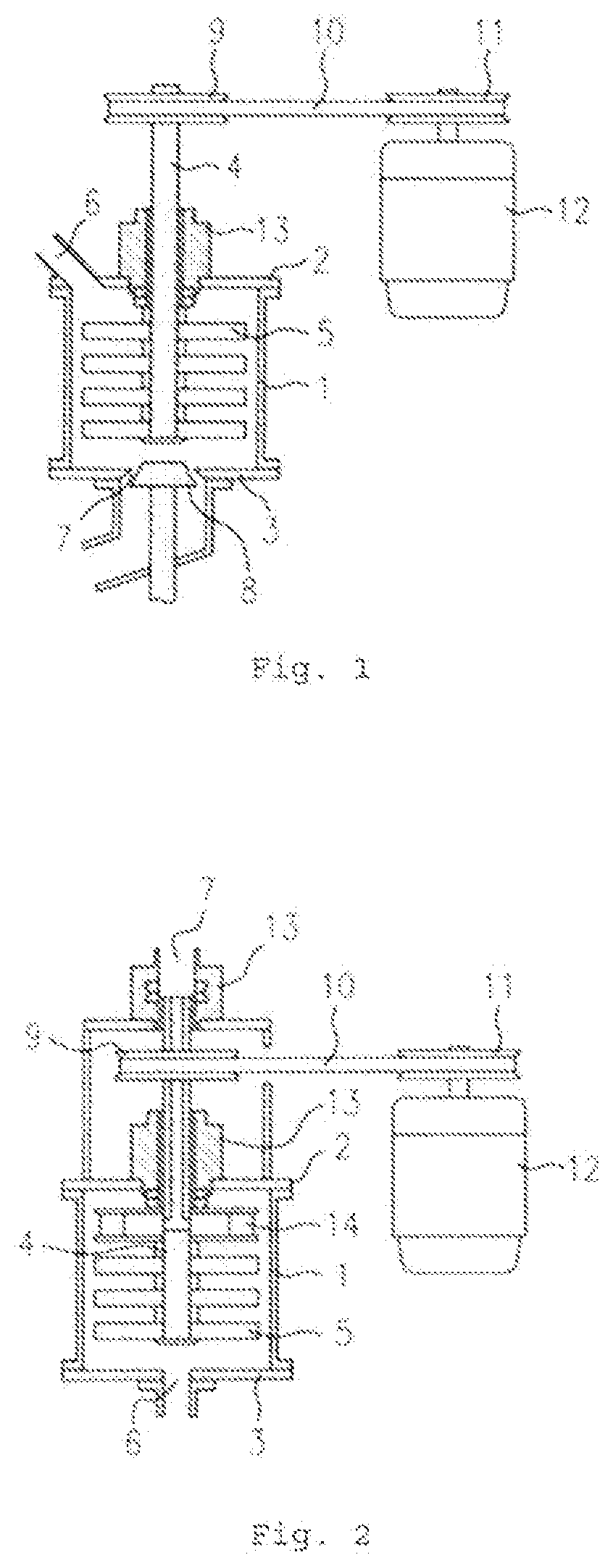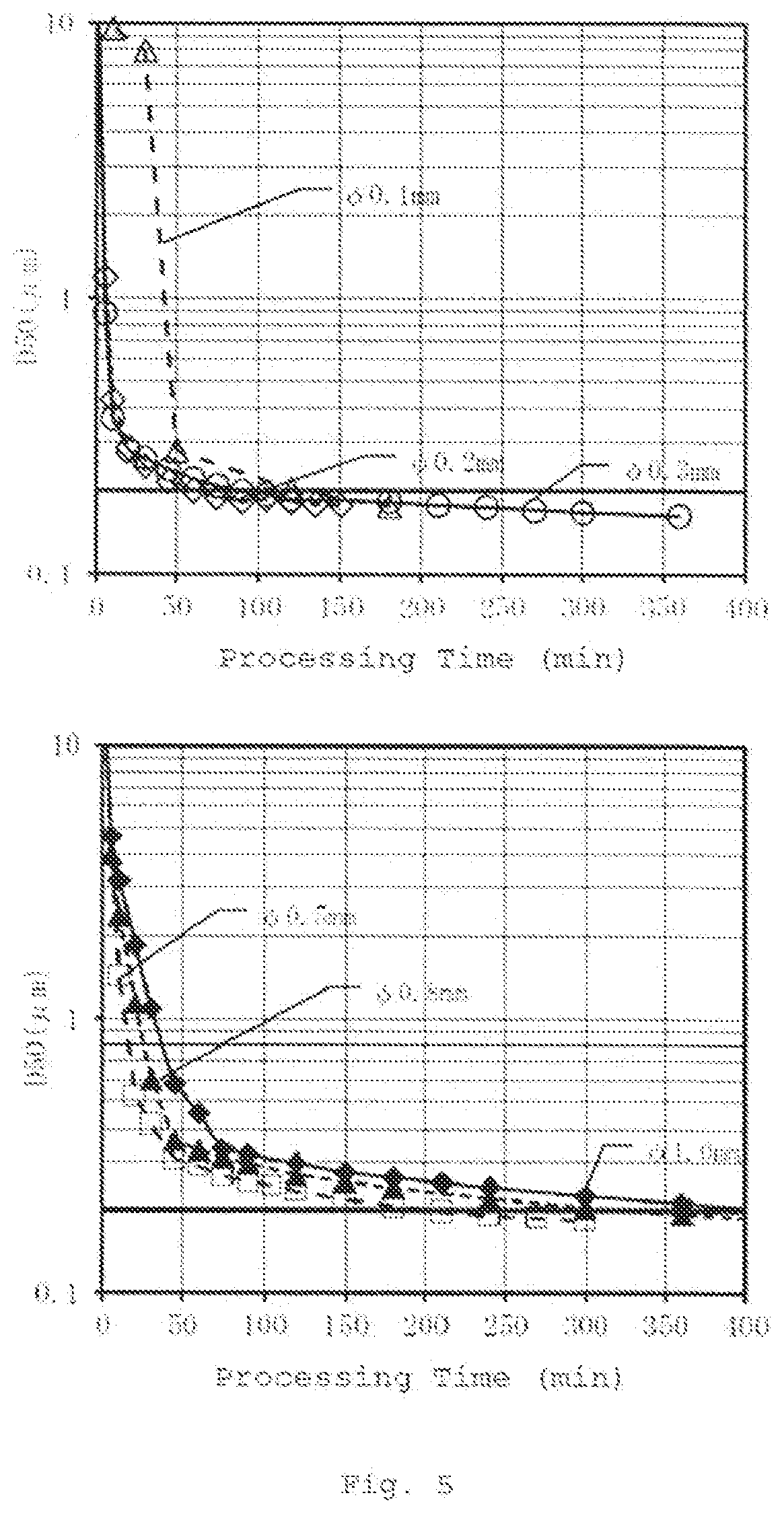Organic nanoparticle production method and organic nanoparticles
a technology of organic nanoparticles and production methods, which is applied in the field of organic nanoparticle production methods and organic nanoparticles, can solve the problems of affecting the quality of organic nanoparticles, so as to reduce the contamination of beads and components of bead mills and prevent contamination
- Summary
- Abstract
- Description
- Claims
- Application Information
AI Technical Summary
Benefits of technology
Problems solved by technology
Method used
Image
Examples
examples 1 to 31
[0136]Slurries of different organic particles (phenytoin, sulfamethoxazole, fenofibrate, mefenamic acid, itraconazole) were ground using the bead mills shown in FIGS. 1 to 4 (Apparatuses 1 to 4). The bead mills used are as follows (the zirconia recited below contain yttrium as an additive).
[0137]Apparatus 1: Apex Mill 015 (manufactured by Hiroshima Metal & Machinery). The materials of the parts in contact with the drugs are tungsten carbide, nickel (mechanical seal), zirconia-containing reinforced alumina (stator), zirconia (rotor) and perflo (O-ring).
[0138]Apparatus 2: Ultra Apex Mill 015 (manufactured by Hiroshima Metal & Machinery). The materials of the parts in contact with the drugs are tungsten carbide, nickel (upper and lower mechanical seals), zirconia-containing reinforced alumina (stator), zirconia (separator, rotor) and perflo (O-ring).
[0139]Apparatus 3: Experimental prototype. The materials of the parts in contact with the drugs are zirconia-containing reinforced alumina...
PUM
| Property | Measurement | Unit |
|---|---|---|
| particle size | aaaaa | aaaaa |
| particle size | aaaaa | aaaaa |
| speed | aaaaa | aaaaa |
Abstract
Description
Claims
Application Information
 Login to View More
Login to View More - R&D
- Intellectual Property
- Life Sciences
- Materials
- Tech Scout
- Unparalleled Data Quality
- Higher Quality Content
- 60% Fewer Hallucinations
Browse by: Latest US Patents, China's latest patents, Technical Efficacy Thesaurus, Application Domain, Technology Topic, Popular Technical Reports.
© 2025 PatSnap. All rights reserved.Legal|Privacy policy|Modern Slavery Act Transparency Statement|Sitemap|About US| Contact US: help@patsnap.com



